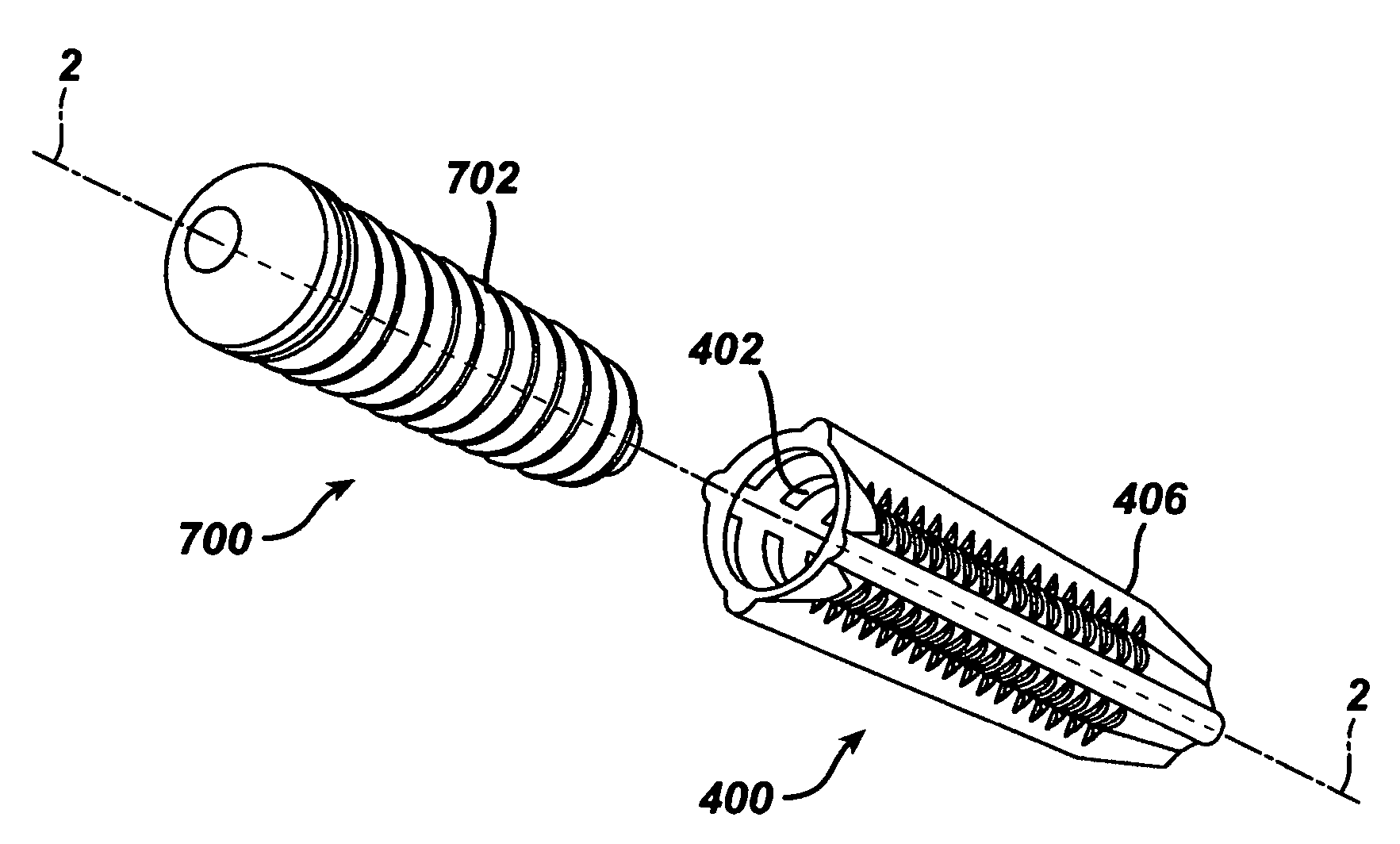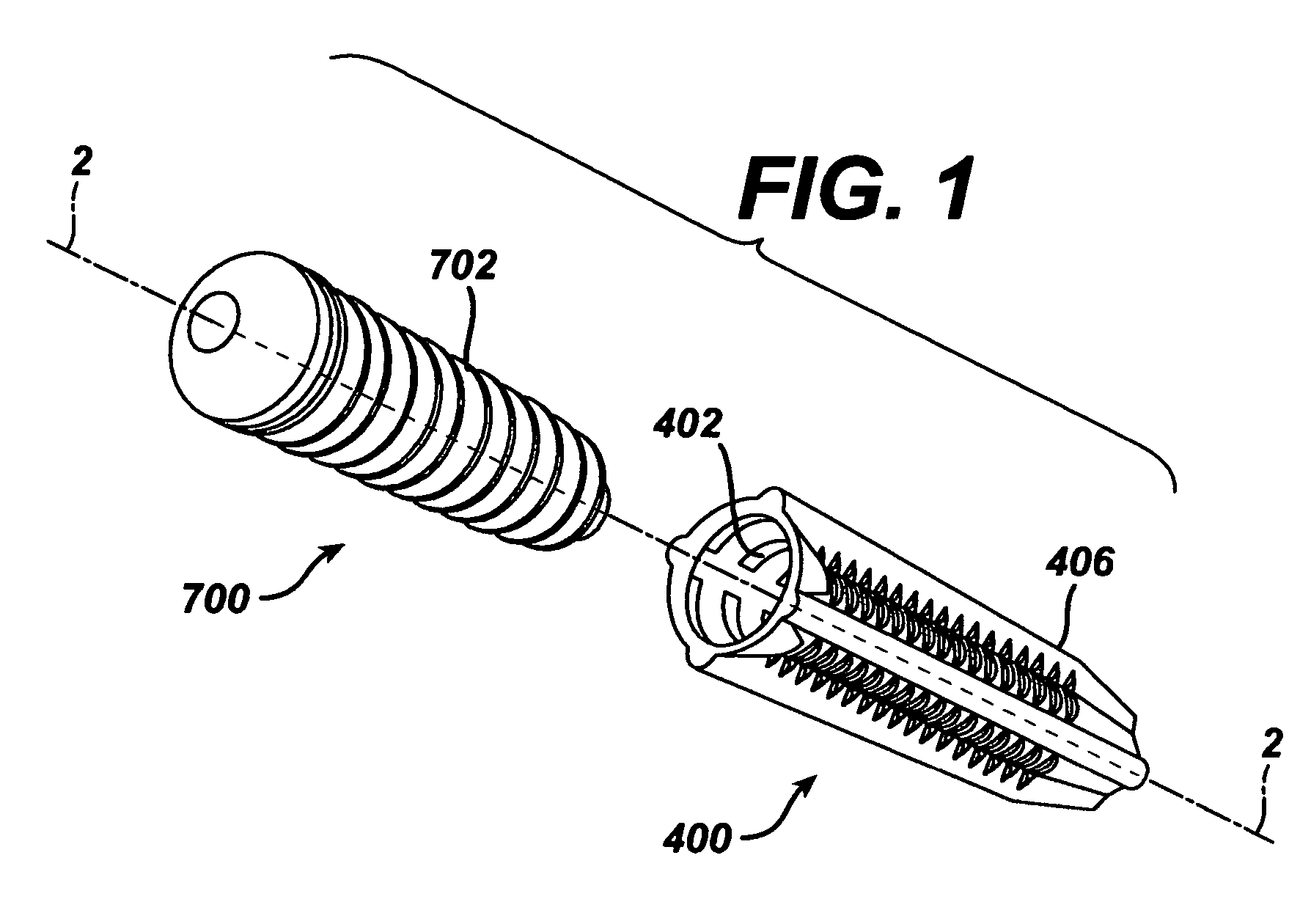Implantable medical devices and methods for making same
a medical device and implantable technology, applied in the field of implantable medical devices, can solve the problems of ineffective or shortening the useful life of the device, prolonging the recovery time, inflammation and pain of the patient,
- Summary
- Abstract
- Description
- Claims
- Application Information
AI Technical Summary
Benefits of technology
Problems solved by technology
Method used
Image
Examples
example 1
Compounding a Blend of PLA Polymer and PCDO Copolymer
[0045]The polymer, poly(lactic acid) (PLA) with an I.V. of 2.4 dl / g, was obtained from Purac Biochem (Gorinchem bv, the Netherlands). The PCDO copolymer, obtained from Ethicon, Inc., Somerville, N.J., was a copolymer of poly(epsilon-caprolactone) (PCL) and poly(para-dioxanone) (PDO) with a mole ration 95 / 5 mole percent (95 / 5 PCDO). The I.V. of the copolymer was 1.5 dl / g.
[0046]The polymer and PCDO copolymer were dry premixed at a weight ratio of 91 / 9. An 18-mm co-rotation twin-screw extruder (Model micro 18 GL / 35, American Leistritz Extruder Corp., Somerville, N.J.) was used in the compounding process. The dry premix mixture was fed to the extruder at a feed rate of 5 lbs / hr using a gravimetric feeder.
[0047]The compounding conditions, using a low to medium shear screw design, were as follows: 1) temperature profile from the hopper to die was 100, 195, 195, 195, 190, 190, 190° C., 2) screw speed was 150 rpm, 3) melt pressure about 9...
example 2
Compounding a Blend of PLA Polymer and PCDO Wax
[0048]The polymer, poly(lactic acid) (PLA) with an I.V. of 2.4 dl / g, was the same as that used in Example 1. The wax, obtained from Ethicon, Inc., Somerville, N.J., was a copolymer of poly(epsilon-caprolactone) (PCL) and poly(para-dioxanone) (PDO) with a mole ration 95 / 5 mole percent (95 / 5 PCDO). The I.V. of the wax was 0.5 dl / g. The polymer and wax were dry premixed at a weight ratio of 91 / 9. The same extruder as described in Example 1 was used in the compounding process. The dry premix mixture was fed to the extruder at a feed rate of 5 lbs / hr using a gravimetric feeder. The compounding conditions, using a low to medium shear screw design, were the same as followed in Example 1. The extrudate was cooled using an air cooling conveyer, then pelletized and stored at room temperature under vacuum for future application. The resulting blend was 91 / 9 PLA / (95 / 5 PCDO).
example 3
Compounding a Blend of PLA Polymer and PCGA Wax
[0049]The PLA polymer was the same as used in Example 1. The wax, obtained from Ethicon, Inc., Somerville, N.J., was a copolymer of poly(epsilon-caprolactone) (PCL) and poly(glycolide) (PGA) with a mole ration 90 / 10 mole percent (90 / 10 PCGA). The I.V. of the wax was between 0.3 and 0.5 dl / g.
[0050]The polymer and wax were dry premixed at a weight ratio of 15 / 85, 9 / 91 and 5 / 95. The same extruder as described in Example 1 was used in the compounding process. The dry premix mixture was fed to the extruder at a feed rate of 5 lbs / hr using a gravimetric feeder.
[0051]The compounding conditions, using a low to medium shear screw design, were the same as Example 1, except the melt pressure was about 800 psi, and the torque was about 25 percent. The extrudate was cooled using an air cooling conveyer, then pelletized and stored at room temperature under vacuum for future application. The resulting blend was 85 / 15 PLA / (90 / 10 PCGA).
PUM
| Property | Measurement | Unit |
|---|---|---|
| melting temperature | aaaaa | aaaaa |
| melting point | aaaaa | aaaaa |
| melting point | aaaaa | aaaaa |
Abstract
Description
Claims
Application Information
 Login to View More
Login to View More - R&D
- Intellectual Property
- Life Sciences
- Materials
- Tech Scout
- Unparalleled Data Quality
- Higher Quality Content
- 60% Fewer Hallucinations
Browse by: Latest US Patents, China's latest patents, Technical Efficacy Thesaurus, Application Domain, Technology Topic, Popular Technical Reports.
© 2025 PatSnap. All rights reserved.Legal|Privacy policy|Modern Slavery Act Transparency Statement|Sitemap|About US| Contact US: help@patsnap.com



